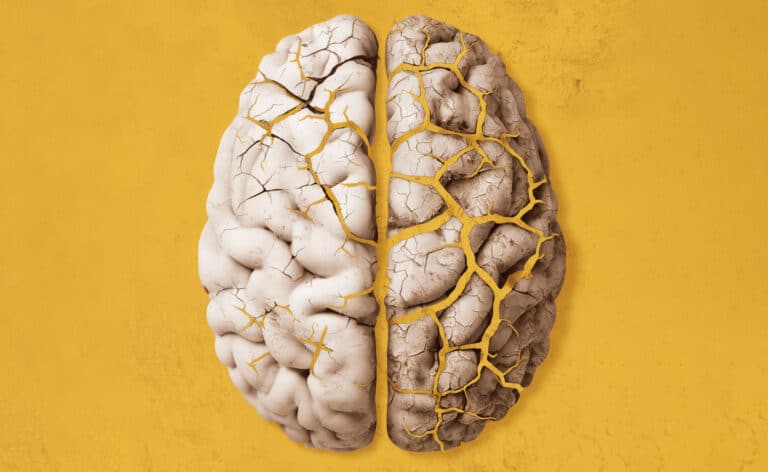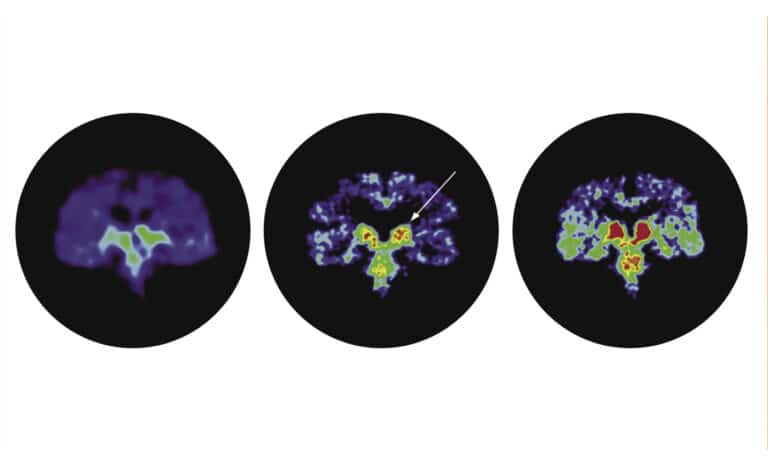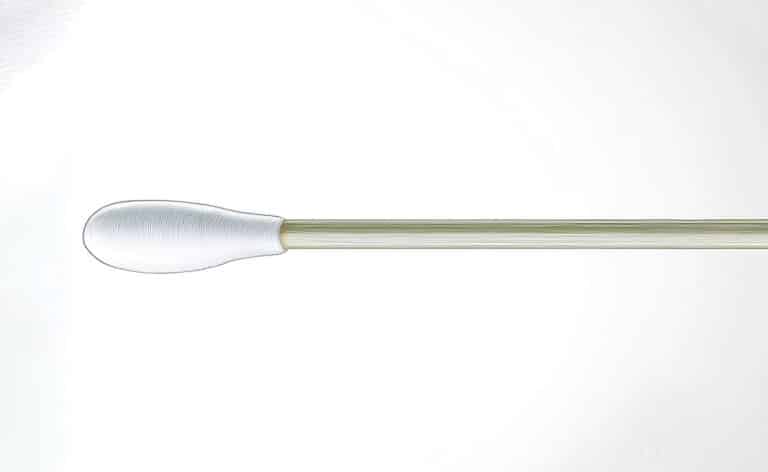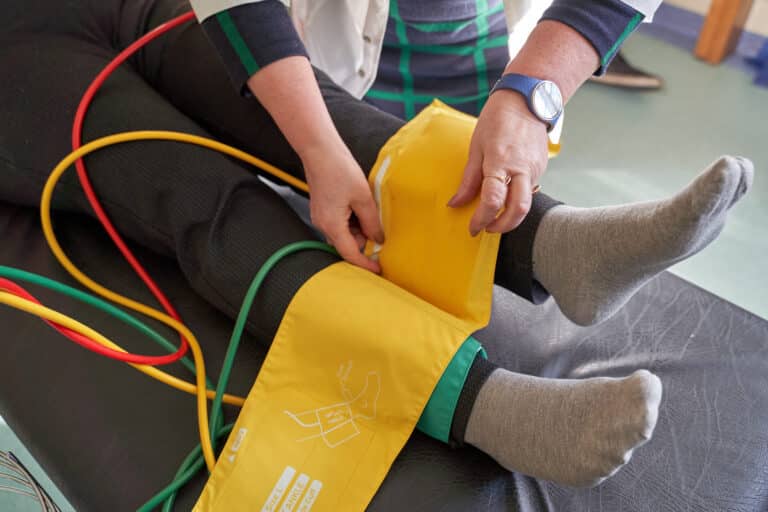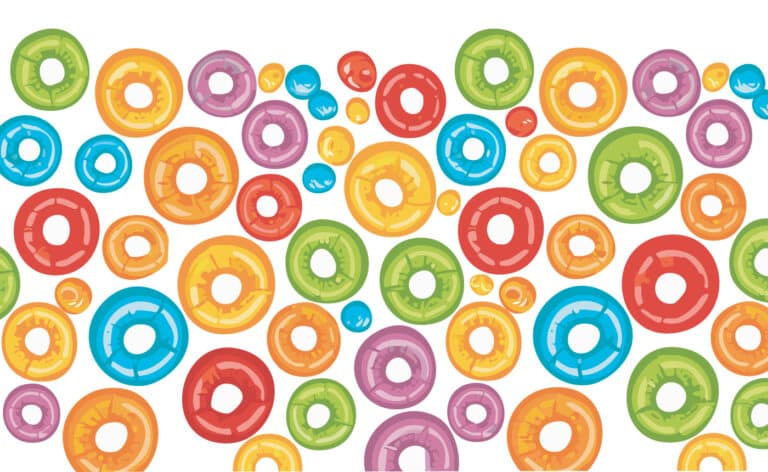Better surgeries, less radiation, and new drugs are changing treatments and offering hope
In 1811, Nabby Adams, daughter of President John Adams and Abigail Adams, was diagnosed with breast cancer. Brave Nabby submitted to a mastectomy without anesthesia in her parents’ home. The doctor successfully removed her tumor, but the cancer reappeared, and she died two years later, at age 48.
Two centuries later, in 2002, Chicagoan Jan Kallish also was diagnosed with breast cancer and had a markedly different experience. Kallish underwent a lumpectomy, four chemotherapy treatments, and six weeks of radiation therapy. She also spent five years taking two different hormone therapies.
Both Adams and Kallish sought second opinions and researched their treatment. Adams’ research involved a wagon ride from her home in upstate New York to a doctor in Boston. Kallish’s centered around a computer and world-class specialists at multiple academic medical centers in Chicago.
And if Kallish were diagnosed today, she might have had a very different treatment than she did 19 years ago. That’s the speed at which breast cancer treatment has progressed.
Types of breast cancer
Breast cancers can widely differ from one another, but generally they fall into three specific types, explains Rita Nanda, MD, associate professor and director of breast oncology at UChicago Medicine. The three major categories are:
- Hormone receptor-positive. These cancers can be estrogen receptor (ER) positive and progesterone receptor (PR) positive.
- HER2 positive. HER2 is a growth factor, and HER2-positive cancers tend to grow faster than HER2-negative cancers. Note that HER2-positive cancers can be either hormone receptor positive or negative.
- Triple negative. These cancers are not affected by estrogen, progesterone, or HER2 growth factor.
Any of these cancers can be early stage or metastasized, meaning that they have spread to other organs, most commonly the bones, liver, or lungs.
It’s important to know which kind of breast cancer you have in order to determine treatment options. For instance, hormone therapy — such as drugs that block estrogen — is effective for hormone receptor-positive cancers, but it doesn’t work on triple negative cancers because those cancers don’t have hormone receptors.
Changes in surgery
The first-line treatment for breast cancer is often surgery. Fortunately, surgical approaches are rapidly improving. Many doctors now routinely administer chemotherapy before surgery rather than afterward for certain types of breast cancer with large tumors. This treatment, known as neoadjuvant therapy, can shrink the tumor prior to surgery, making the surgery easier to perform and more effective.
It’s now considered standard practice for individuals with a tumor that’s 2 centimeters or larger or has lymph node involvement, particularly those with triple-negative or HER2-positive breast cancer, Nanda says. Sometimes, the tumor shrinks so much that it disappears.
“Our chemotherapy up front oftentimes works so well that we have what’s called a pathologic complete response, where we won’t even find any cancer remaining,” says Catherine Pesce, MD, a surgical oncologist at NorthShore University HealthSystem. “It’s unfortunate that we still need to do the surgery to prove that, but at some point maybe we could avoid surgery altogether in those patients.”
Another changing treatment is mastectomy. In a nipple-sparing mastectomy, the surgeon makes an incision from the bottom of the breast up and preserves the nipple and breast skin, leading to better cosmetic results.
However, this is a tricky surgery for the surgeon to perform, and not all doctors offer it. “It is extremely difficult. We have to do the operation almost horizontally. You’re bending in very awkward positions. Ergonomically, it’s not easy at all, yet we try to do it on everyone we can, because it gives patients the best cosmetic result possible,” Pesce says. Researchers are investigating whether robotic surgery could make the surgery easier and more common.
Improvements in radiation
As recently as five or six years ago, breast cancer patients headed to surgery first saw a radiologist, who would insert radioactive wires into the breast to guide the surgeon toward the tumor and the closest lymph nodes.
This awkward and painful procedure is rapidly becoming a thing of the past. Instead, radiologists today can insert a tiny radioactive seed to mark the tumor’s location.
“It’s just much less invasive. There is no wire sticking out of their breast. We also feel that it makes the surgery more precise,” Pesce says. She adds that the radioactive seed does not pose any risk of radiation to the patient, patient’s family, or surgeon who removes the seed during surgery.
After surgery, radiation treatment is becoming shorter and more convenient as well. In the past, a person with breast cancer that had not spread to the lymph nodes would typically have radiation treatments five days a week, for six or seven weeks.
Today it is half that, and doctors are looking at even shorter courses of radiation, as little as one week, says Jonathan Strauss, MD, associate professor of radiation oncology at Northwestern University Feinberg School of Medicine.
New drugs
Personalized medicine, which involves testing to see which drugs work best based on an individual’s genes, is also changing treatment options.
For those with hormone receptor-positive breast cancer, standard practice now involves testing the tumor for an array of genes, to predict how it would respond to chemotherapy. After surgery, the surgeon sends slides of the tumor to a laboratory that analyzes it for up to 21 genes and assigns a score.
People whose tumors score in the low or low-middle range can often avoid chemotherapy — in these cases, the risk of side effects is greater than the potential benefit. Instead, after surgery they can manage their disease with radiation therapy for a few weeks and hormone therapy for five to 10 years.
Drug treatments are also becoming more convenient. In the past, people with breast cancer often would have to be hooked up to an intravenous (IV) chemo infusion at the hospital for hours at a time. But now, many of the new treatments are pills, which people can easily take at home.
Some drugs — such as some monoclonal antibodies used to treat HER2-positive breast cancer — can be given as a subcutaneous injection or as an IV drip. The injection is a much quicker route of administration, Nanda says, taking only 15 minutes as opposed to an hour or more.
From surgery to radiation to drugs, breast cancer treatments are rapidly improving. And survival rates are improving along with them. U.S. deaths from breast cancer dropped 40% between 1989 and 2017, according to the American Cancer Society.
The progression of breast cancer treatment is an amazing story. Today, people diagnosed with breast cancer benefit from the incredible resources and knowledge that have developed in the two centuries since stoic Nabby Adams endured her surgery and in the two decades since Kallish had her successful treatments. And the path, always evolving, looks even brighter for future generations.
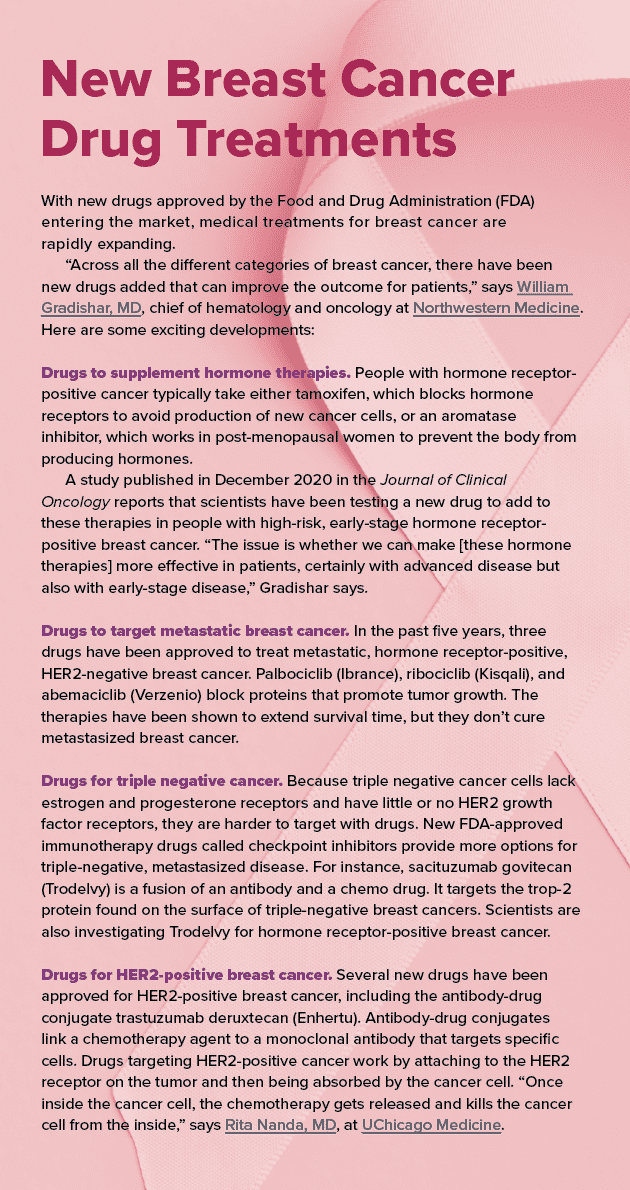
Originally published in the Spring/Summer 2021 print issue. Image Above: Mastectomy. Drawing attributed to a Dutch artist, 17th century
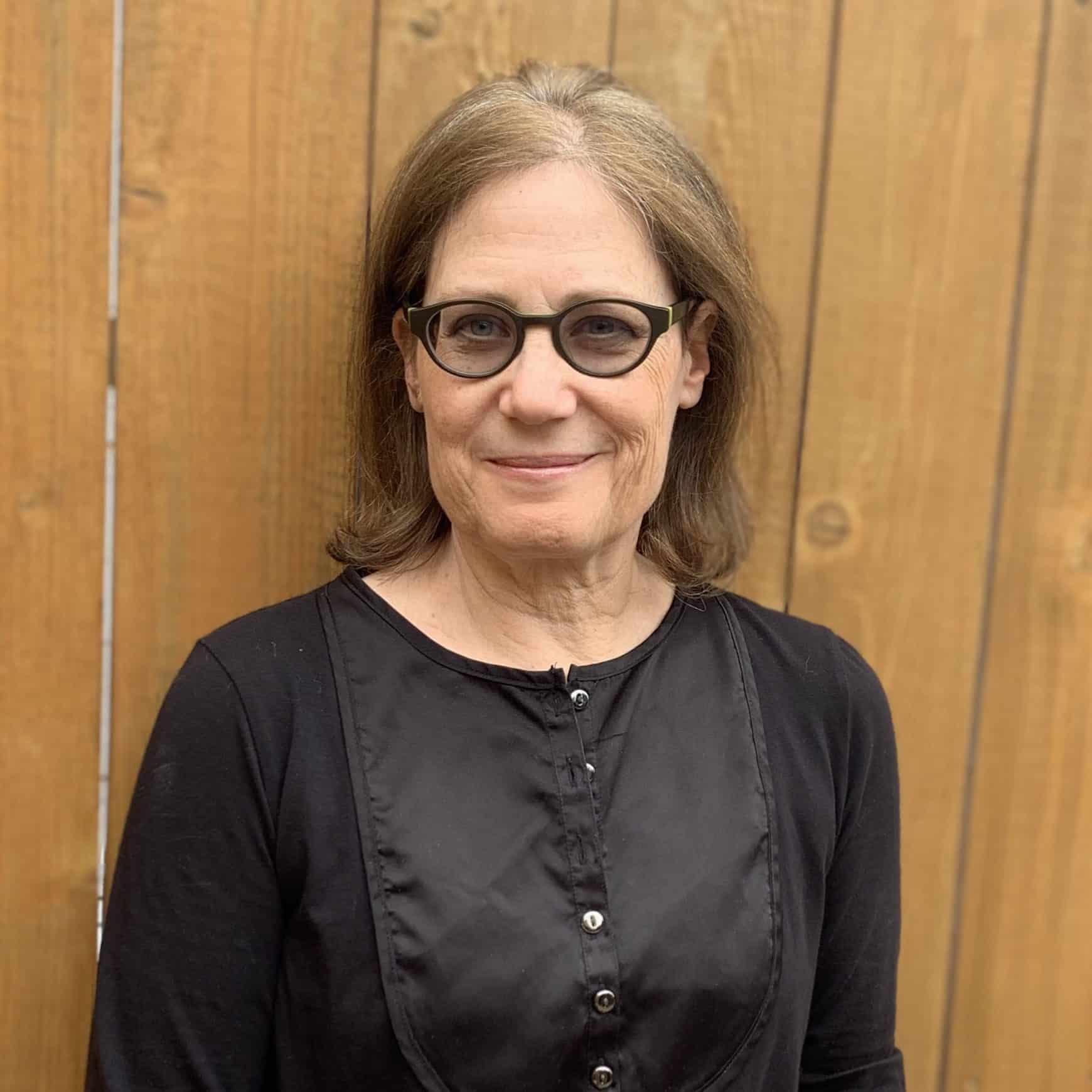
Ronit Rose is a freelance writer, based in Chicago. She has a special interest in health, healthcare and preventive medicine.

